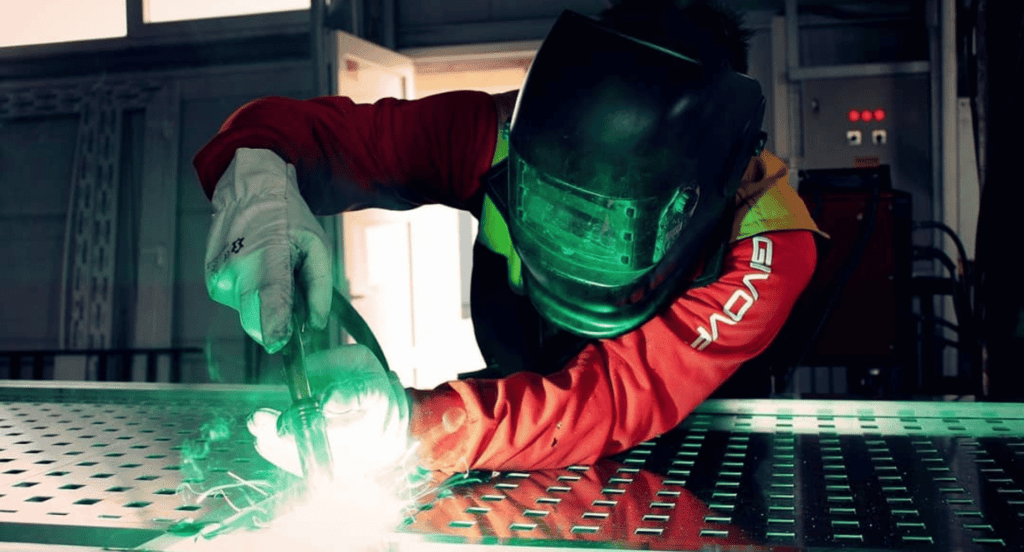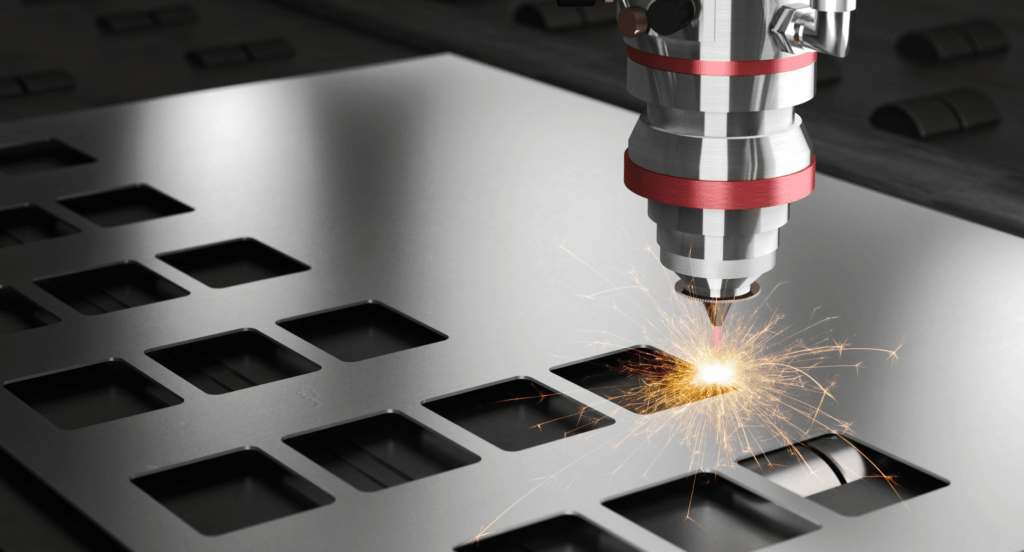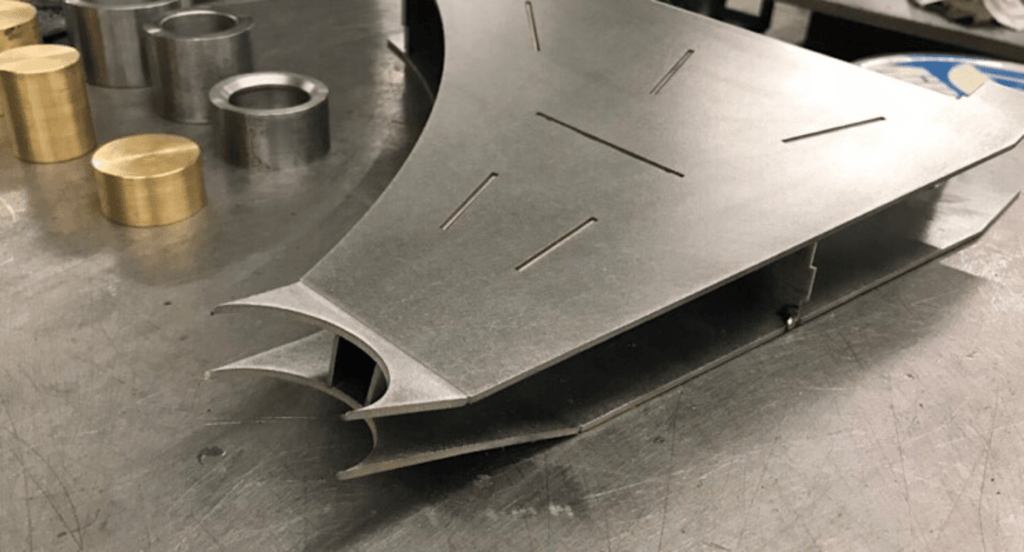Has anyone wondered how a simple piece of metal transforms into a complex, functional prototype? The answer lies in the innovative process of sheet metal prototype fabrication.
Leveraging extensive experience and a deep understanding of the industry, we’re here to guide you through the world of metal fabrication. Your project’s precision and success are at the forefront of our commitment.
Sheet metal prototypes are more than just shaping metal; it’s a critical step in bringing engineering concepts to life. It requires a careful balance of technical skill, innovative thinking, and attention to detail.
In this guide, we’ll delve into the essentials of sheet metal prototyping, providing insights into the techniques, tools, and strategies that make a successful prototype.
Read on to discover the art and science behind sheet metal prototyping.
1. The Basics of Sheet Metal Prototyping
Sheet metal prototyping, a fundamental phase in product development, involves transforming designs into tangible models using techniques like cutting, bending, and joining. This process demands precision, as even minor errors can significantly impact the final product. The skill and planning involved are crucial, as a prototype’s quality heavily relies on the craftsmanship and understanding of metal properties.
This significance is mirrored in the growing rapid prototyping market, which, according to precedence research, is projected to reach around USD 14.78 billion by 2032. This trend underscores the increasing demand and value of high-quality prototyping in various industries, emphasizing the need for meticulousness and expertise in the field.
2. Techniques in Sheet Metal Prototyping
After understanding the basics of sheet metal prototyping, it’s vital to explore the specific techniques that transform simple sheets into complex prototypes. Each method contributes uniquely to the prototype’s final shape, functionality, and aesthetics. Let’s explore some of the key techniques:
Welding and Joining
Welding and joining are critical for assembling multiple pieces into a cohesive prototype. Techniques vary from TIG and MIG welding to more detialed methods like spot welding, each offering distinct advantages depending on the project’s requirements. Zemetal employs these techniques to ensure strong, durable joins, essential for the structural integrity of the prototype.

Metal Bending
Metal bending is a process where force is applied to a metal sheet to alter its shape without compromising its volume. This technique is crucial for creating angular structures and components. It relies heavily on the expertise of the operator to achieve the desired angle and curvature. Skilled craftsmen can manipulate metal with surprising agility and precision, turning a flat sheet into a complex, three-dimensional structure.

Laser Cutting
Laser cutting stands as a precision-driven technique, utilizing a high-powered laser to slice through metal with incredible accuracy. This method is renowned for its ability to produce clean, smooth edges and intricate designs. It’s especially effective for complex components where precision is paramount. Laser cutting is ideal for intricate patterns on thin sheets, demonstrating its precision and versatility.

3. Design Aspects of Sheet Metal Prototypes
In the intricate process of creating sheet metal prototypes, certain design aspects stand out as crucial for ensuring a successful and functional end product. Here’s a focused look at these specific elements:
- Bend Radius: The bend radius must be carefully considered to prevent material weakening or cracking. A larger bend radius can enhance the durability of the part, especially for thicker sheets.
- Material Grain Direction: Aligning the design with the material’s grain direction is vital for structural integrity. Incorrect alignment can lead to unexpected bending or warping. For example, parts under tension should have their longest dimension parallel to the grain.
- Cutouts and Notches: The size and location of cutouts and notches must be strategically planned to maintain structural integrity while fulfilling design requirements. Too close to an edge or bend can weaken the prototype.
- Tab and Slot Features: Incorporating tabs and slots can facilitate easier assembly and alignment of multi-part prototypes. It’s remarkable how these small additions can streamline the entire assembly process and ensure accuracy.
- Embossing and Debossing: These processes can add both functional and aesthetic features to a prototype. Embossing can strengthen areas or create channels for cables, whereas debossing can be used for labeling or aesthetic detailing.
4. The Process of Creating a Sheet Metal Prototype
Creating a sheet metal prototype is a meticulous and multifaceted process, vital for transforming conceptual designs into functional models. Each step is integral to ensuring that the final prototype meets the desired standards of quality and functionality. Here’s an insightful look into the specific stages involved:
Step#1 Design and CAD Modeling
The process starts with translating an idea into a digital model using Computer-Aided Design (CAD) software. This step involves detailed planning of dimensions, folds, and cuts. The CAD model is crucial as it serves as the blueprint for the prototype and helps in identifying potential issues early in the process.

Step#2 Material Selection and Preparation
Next, select the right materials for the prototype intended function, strength requirements, and aesthetic considerations. Once chosen, the material is prepared for fabrication, which may involve cleaning, cutting to size, or applying treatments to enhance its properties.
Step#3 Precision Cutting and Shaping
Techniques like laser cutting, waterjet cutting, or punching are used to cut the metal accurately according to the CAD design. Once selection done, then shaping processes such as bending or rolling give the metal its desired form. The precision in this stage is vital for the fit and functionality of the final prototype.
Step#4 Assembly and Joining
For this stage it involves assembling the shaped parts into a complete prototype. Techniques like welding, riveting, or screwing are used to join the pieces. Attention to detail is paramount here, as even a minor misalignment can affect the prototype’s functionality.
Step#5 Finishing and Inspection
The final steps involve finishing processes such as sanding, deburring, or applying coatings to improve the prototype’s appearance and resistance to wear and corrosion. The completed prototype undergoes thorough inspection and testing to ensure it meets all design specifications and quality standards. This thorough evaluation is essential for confirming the prototype’s performance prior to production review.
5. Applications of Sheet Metal Prototypes
Once the precise and complex process of creating a sheet metal prototype is complete, these prototypes find their niche in various industries, demonstrating their versatility and essential role. Here’s a closer look at some specific applications across different sectors:
Energy and Utilities
In the energy sector, including renewable energy, sheet metal prototypes are used to create components for machinery and structures like wind turbines, solar panels, and electrical enclosures. These prototypes help ensure designs are efficient, durable, and resilient against environmental stresses. This application is vital for advancing energy solutions and creating a sustainable future.

Construction and Architecture
Sheet metal prototypes play a pivotal role in construction and architecture, helping designers and engineers to visualize and test structural components like beams, ducts, and roofing. It’s fascinating to see how these prototypes transform into vital elements of large structures, ensuring safety and integrity. Their precision is crucial in creating components that fit perfectly, reducing errors and waste during construction.

Aerospace and Defense
The aerospace and defense industries rely heavily on sheet metal prototypes for their strict safety and precision standards. Components like fuselage panels, wing sections, and cockpit instruments are often prototyped using sheet metal to test their resilience and functionality under extreme conditions. Zemetal excels at ensuring safety and performance in aircraft and military equipment through precise prototyping.
6. Common Mistakes to Avoid in Sheet Metal Prototyping
While sheet metal prototyping is a vital step in product development, certain pitfalls can hinder the process, affecting the quality and functionality of the final prototype. Here’s an exploration of common mistakes to avoid, ensuring a smoother, more efficient path to a successful prototype:
Ignoring Material Properties
One common oversight is neglecting the specific properties of the chosen material, such as its thickness, grain direction, and hardness. These characteristics significantly impact the prototype’s formability, durability, and appearance. Failing to account for these factors can lead to issues like cracking, warping, or unexpected behavior under stress.
Here’s a concise table highlighting common oversights related to material properties in prototype development and their potential impacts:
| Material Property | Potential Impact |
| Thickness | May lead to cracking or inability to hold shape under stress. |
| Grain Direction | Can cause warping or structural weakness when force is applied incorrectly. |
| Hardness | Affects durability and resistance to wear, impacting the prototype’s lifespan. |
| Elasticity | Incorrect assumptions can result in unexpected deformations under stress. |
| Thermal Expansion | May cause issues in environments with fluctuating temperatures, affecting fit and function. |
Overlooking Tolerances
Underestimating the importance of tight tolerances is a frequent error. Even slight deviations can lead to parts not fitting together correctly, causing assembly issues or functional defects. It’s essential to respect the precision of the design, ensuring that each component is manufactured to the exact specifications required for the prototype to function as intended.
Inadequate Finishing
Neglecting the finishing phase, which includes polishing and coating, can result in a prototype that’s not only aesthetically unpleasing but also potentially hazardous with sharp edges or weak spots. Proper finishing enhances both the appearance and the longevity of the prototype, protecting it from corrosion and wear. This step should never be seen as just an afterthought but as an integral part of the prototyping process.
7. 3 Tips When Considering Sheet Metal Prototyping Services
Selecting the right service for sheet metal prototyping is as crucial as the prototyping process itself. To ensure the best outcomes, it’s important to consider a few key factors. Here are some tips to guide you in choosing a service provider that meets your specific prototyping needs:
#1 Evaluate Technical Expertise
Assess the technical expertise of the service provider. Look for a team with extensive experience in various prototyping techniques and a deep understanding of different metals and their properties. For example, a provider skilled in both traditional and modern methods can offer versatile solutions for complex prototypes.
#2 Prioritize Quality Assurance
When selecting a sheet metal prototyping service, emphasize the importance of rigorous quality control. This involves thorough inspections at various stages of the prototyping process, ensuring that each prototype meets specified tolerances and design requirements. Like services conducting material testing and accuracy checks ensure prototypes meet high quality and performance standards.
#3 Consider Turnaround Time and Flexibility
In choosing a sheet metal prototyping service, prioritize one that offers efficient turnaround times and is adaptable to changes. Specifically, look for services that can deliver prototypes within a defined timeframe, such as within a few weeks, depending on the project’s complexity. Additionally, a service’s quick response to design changes or scope shifts is essential for maintaining project momentum through unexpected challenges.
Conclusion
Throughout this guide, we’ve delved into the essential aspects of sheet metal prototyping, shedding light on practices and precautions that can significantly improve your fabrication process. This knowledge serves as a foundation for producing prototypes that are both functional and refined.
For those seeking precision and expertise in their sheet metal projects, Zemetal is here to assist. To learn more or get started on your project, contact us – we’re here to help bring your ideas to life.
Dive Deeper Into Our Resources
Looking for more diverse service options? Browse through our handpicked selections:
Still haven’t found what you’re looking for? Don’t hesitate to contact us. We’re available around the clock to assist you.








